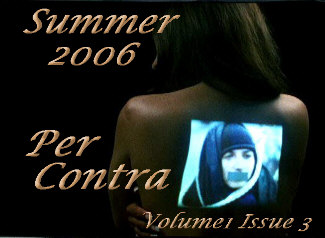
Comb your hair: it’s not just the paparazzi anymore.
Three years after George Orwell wrote l984, Bill Golden designed the CBS logo, an eye. Golden probably did not envision the logo’s placement in strategic locations accompanying cameras to photograph passers by. Yet, in August of l964 when the Democratic Convention was being held in Atlantic City, New Jersey, I walked with a friend on the boardwalk and looked up at just such an eye logo and camera. And another. And another. My friend and I made wry comments about Big Brother watching us, and how creepy we felt being watched—or knowing that we could be. Were the cameras on or were they just advertising? We didn’t know. Today the cameras have proliferated, and they aren’t accompanied by great big eyes. On the contrary, they are often hidden or disguised. And they’re always on.
Surveillance cameras made their appearance in banks following a l968 law, the Bank Protection Act, requiring Federal bank supervisory agencies to
“promulgate rules establishing minimum standards with which each bank or savings and loan association must comply with respect to the installation, maintenance, and operation of security devices and procedures, reasonable in cost, to discourage robberies, burglaries and larcenies and to assist in the identification and apprehension of persons who commit such acts....require reports with respect to the installation, maintenance, and operation of security devices and procedures.” Public Law 90-389, US Code Title 12, Section 1882 (a) (1968), italics added.)
This law, however, did not specifically mandate cameras. It was implemented by a regulation that included cameras in the list security devices. [Code of Federal Regulations, Title 12 Part 216.3. (l991)] A New York Banking law mandated that cameras be kept in ATM machines “Every banking institution shall maintain...a surveillance camera...the recordings made by these cameras shall be maintained for at least 45 days.” [New York Banking Law, Section 75-c (l996).]
But we could not have imagined then that in 2006 Closed Circuit Television (CCTV) cameras commonly would be in lobbies of buildings, and in convenience and department stores. Nor did we imagine cameras on street corners and on traffic lights with monitors at a distance or web cams that would allow anyone to watch us walk on the beach in Cape May or pray at the Western Wall in Jerusalem. (Until I did a more recent search, I’d thought the most bizarre such web cam location is a hotel lobby in Niagara Falls.) You can do a web search for web cam locations—and some privacy advocates are giving tours of locations of cameras to raise awareness of their presence.
In the debate about surveillance, especially in the context of government observation, much is said about the “expectation of privacy,” a phrase that comes from the l983 court decision:
A person traveling in an automobile on public thoroughfares has no reasonable expectation of privacy in his movements from one place to another. When [an individual] traveled over the public streets he voluntarily conveyed to anyone who wanted to look the fact that he was traveling over particular roads in a particular direction, and the fact of his final destination when he exited from public roads onto private property.” United States vs. Knotts 468 U.S. 276, 281-82 (1983).
In the context of criminal law, one speaks of the “plain view rule” and “open field doctrine” in relation to the Fourth Amendment. See link below.
http://www.library.ca.gov/CRB/97/05/crb97-005.html#overview
What is the expectation of privacy? Twenty some years ago I had lunch with my mother. It was a pleasant lunch, and I was happy that she’d come to visit me. As she was leaving, she reached into her pocket book and, laughing, said she had something I might want. She pulled out a close-up photo of me talking to a man. Her mailman, who’d been to the same street festival I’d attended, had seen me and used a telephoto lens to get the shot. I’d been in a crowd with thousands of people, and nonetheless, though everyone could see me, somehow I felt that photo violated some expectation that I hadn’t even thought about. Until then.
The cost of credit isn’t on the bill.
http://inventors.about.com/od/cstartinventions/a/credit_cards.htm
I did without a credit card until the late seventies, less because I was keen on privacy, than because I’d been brought up to pay for things right away, and not to buy them if I couldn’t. Finally I caved and applied for a card when a department store wanted to fingerprint me before they’d accept my check.
Talking about this essay with my friend, he reminded me that in the late sixties some even more paranoid than I—instead of hipper than thou, more paranoid than thou became a mark of status—were talking about how the government was going to do away with cash. Every purchase then would be monitored or, worse, controlled. Now only businesses monitor our purchases, at least those made at supermarkets with bar coded discount cards. Or on certain online booksellers or are happy to make recommendations for other books you might like—the next time you go to the site. Of course we leave an electronic trail in libraries and online.
Oh where, oh where has my little dog gone?
Recently similar rumors resurfaced. These were about identity chips and medical records chips that would be implanted in people, not to mention the use of Radio Frequency Identification Chip (RFID)—or Electronic Product Code (EPC) for products, which not only would identify products as does the bar code, but give a unique number to each individual item and have the ability to “send and receive data.” See link below.
Such chips could be used to locate people as implants are now used to locate lost pets.
I just “met” a baby beagle that had just been adopted by a young couple. The darling little the dog had been found wandering alongside a busy highway and had been taken to an animal shelter from which the couple had adopted her. They said proudly that they’d had a chip implanted in her. “You’ll never be lost,” one of them cooed, as he stooped down so she could lick his face. “We’ll always be able to find you,” his mate added. No wandering off down the highway for her.
Nor for us: no being lost in the woods, in storms, on the sea adrift. Safe.
Or would we? Would child molesters kidnap fewer children—or would the kidnappers instead be certain to murder the children before the implanted chip would enable the police to find them?
Off route, recalculating.
In one vision of the future—whether it be a utopia or dystopia, I leave to you—no one would have to actually drive. You’d just get in your car, punch in the destination and the car would navigate at a safe speed, never bumping into an object.
We aren’t there yet. But more and more people are buying a talking Global Positioning System (GPS) for their cars that plots routes and gives directions. When the driver deviates from the route determined by the system, it says in an always patient voice, “off-route, recalculating...” Couldn’t the travel data be stored and collected? Right now these are one way although I’ve heard that in the future transmitters will be embedded in cars to tell their location....oh, wait!...we have that already, marketed as a as a safety system, complete with voice communication and unlocking car doors. And we also have available tracking system that’s marketed as theft protection. But I know someone whose stolen car was found not through use of such a specialized tracking device, but rather by using the signal of his cell phone that the thieves took along with his car.
Living in the city, I’ve grown accustomed to people walking down the street talking to invisible others. And in years past the invisible interlocutors existed only in the minds of the speakers. Today, however, unless the speaker is gesticulating wildly and shouting obscenities, the likelihood is that s/he’s wearing a Bluetooth and is on the phone. Walking from class back to my office I’d been enjoying a few moments of solitude, looking at the birds and the budding magnolias. Suddenly I noticed that most of the students who were alone were holding cell-phones.
Is that a safety net we’re under?
Someday children won’t be able to imagine how a person could go somewhere and no one would know where he is or how to get in touch-or that someone could set out on a trip and not be able to communicate with those back home. I’d say “Speak with,” but even now some people prefer instant or text messaging to actual voice communication.
Being unreachable oneself—or unable to contact someone-will be terrifying. Looking back at days before embedded chips, tags and transmitters, we will all seem like lost children in a vast but cluttered wilderness.
In the l932 movie Grand Hotel, Gretta Garbo said, not “I want to be alone,” but “I want to be let alone.” By 2032, the concept of what it means “to be let alone” will have changed. By Twentieth Century standards, we will not be let alone. None of us. Nor will we be alone. And those who can remember the late twentieth century, though dimly, will likely find the web of inter-connectedness to be claustrophobic or, perhaps, if they are of a certain turn of mind, they may find it to be instead a cozy comfort.
Either way, I expect to be out of it--but you’ll know where to find me. As Walt Whitman said, “If you want me again look for me under your boot soles.”
